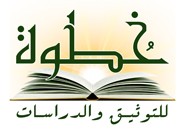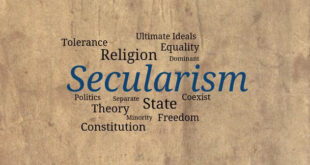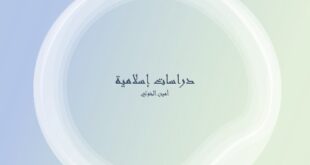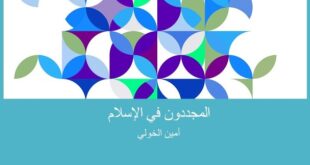Ijtihad and Renovation Between Tradition and Modernity: Exegesis as an Example
By: Mohga Mashhour*
Renovation in the theological epistemological field is a crucial problem that needs personal careful examination which would help us evaluating any additional intellectual topics presented in this field. We must be carefully aware of ideas that are falsely presented as innovations while in reality they are mere repetitions of old ones, or ideas that are totally irrelevant. As a matter of fact, none of these can be considered as accumulated additions to theological epistemology.
To make sure, creative innovation is the soul of intellect and knowledge. It is an epistemological necessity which assures the survival of civilizations, whereas its absence assures, on the contrary, the loss of civilizations. To conclude, innovation is considered to be a governing law.
However, the main problem lies in the way these innovations are applied. Intellectual schools of theological renovation are diversified into three main schools which unfortunately present a major epistemological problem that prevents any real achievement.
The first school views innovation as a matter of full inspiring adoption of the western epistemological model that was successfully able to renew its methods and scientific approaches under the title “Hermeneutics”. Yet, this approach chooses to imitate all of the western methods; the suitable and the unsuitable without discrimination, the case that leads to being intellectually dependant on the west, under the concept “Innovation and Modernity”, instead of trying to develop methods of our own.
The second school views innovation as a matter of re-creating the heritage of epistemological thought, by reviving the collapsed parts, and regaining its initial originality as much as possible, so it would appear as modern but in reality they are not. Thus, innovation according to this school is the reproduction of the past in a new form of speech under the title: “Renovation and Authenticity”.
The third approach views innovation as a fabricated mixture between heritage and modernity, while lacking any historical analysis of both. This is an uncreative non-homogenous epistemological mixture, and is no innovation by all means.
Searching in any epistemological field, creative independent thinkers always refer to some binding cultural and intellectual systems that are inevitably attached to their study field, though they are sometimes not conscious of this. Such intellectual system consists of a network of ideas, values, concepts and symbols that represent the referential basis and cognitive keys of any innovation. No epistemological innovation is conceived without the innovator’s belonging to a certain intellectual reference.
Thereupon, we can comprehend the three main schools of epistemological innovation previously mentioned as follows: the first immanently inspires and adopts the western system of independent thinking (deduction), consciously or unconsciously. That’s why followers of this pattern always call for replacing ‘ijtihad, and its innovation research tools, with western universal originated methods. They also believe that there is no room for methods’ innovation without exposing the fundamentals of Religion to revisions. They see that Religious doctrinal established beliefs should be subject to second thoughts, in order to produce a developing intellect that is capable of interacting with the time epoch it represents. Mohammad Shahrour says in his book “The Qur’anic Stories”, P. 27: “(There is a) necessity for making clear and definite breakthroughs in the framework of this mentality…. What is meant here is to work on the fundamental concepts that construct the self embodiment of Islamic rational consciousness”.
The second approach, that adopts re-creation of heritage, immanently believes in traditional conservative intellectual systems. That’s why it calls for collective adoption of inherited intellectual legacy, without making any reformations, analysis or renovations needed to make them adaptive to the lived time. It sees religious scientific legacy as an umbrella including almost all those life tools needed by any individual or society. Representatives of this thought firmly adopt fixed stagnant inherited epistemological techniques, that’s why their contributions are always repetitive, constant and are mere reproductions of the old. They represent a rigid mentality, considering the Muslim’s identity to be under continuous threat of loss and disintegration, and thus in constant need for protection. In this context, we must stress on the fact that there is no greater human intellectual danger than treating human thoughts as fixed or stagnant absolutes, irrelevant of life’s dynamic incidents and challenges, contradicting the eternal nature of dynamism. It is true that this tendency adopts the Islamic epistemological framework, but without any thoughts of “renewal or innovation”. It does not produce any intellectual new addition to the research methods’ development, nor to the contemporary epistemological development, nor does it offer any new reading of the lived reality.
The third approach compromises between the modern and the inherited epistemologies, yet without having any clear analytical method neither to the modern nor to the old. This school lacks a true innovative method, as it primitively establishes its thoughts on inherited epistemology, and at the same time uses fragmental remnants of the western methods, mistakenly thinking that this way can catch up with the path of epistemological innovation.
Innovation in theological epistemology, as we see, starts out from established rules and doctrinal principles of the Islamic epistemological model combined with building a contemporary methods’ system that trespasses the traditional stagnant research thought, in order to reach a contemporary epistemological production that respects its fundamental doctrines and universal vision. This kind of innovation does not consider such fundamentals as an obstacle that hinders creativity. This state relies mainly on a central methodological concept founded decades ago on the hands of the thinker and philosopher Dr. Abdel Wahab el-Messiry, under the title “the Problem of Bias”[1].
“The Problem of Bias” means the existence of a group of hidden values immanent inside the epistemological models and research methods used by the researcher. Such immanent values and thoughts may exist inside any epistemological model and method; eastern or western, Islamic or secular. Dr. el-Messiry, in his project, was trying to discover and unravel some of the western biases that are hidden inside our (eastern) epistemological values and research tools, methods and terminologies, assuming that the western model is always immanent inside most of our sciences and knowledge. The western model, according to el-Messiry, is a cultural domineering model, exhibited in the western common scientific terms, principles, theories and methods. Dr. el-Messiry suggests the exchange of the western epistemological biases with others that are derived from an Islamic epistemological model. He sees the great deal of simplicity and attraction of western epistemological models as a reason behind applying the western model to all epistemological and renaissance projects in our Arab and Islamic world. Even if some intellectual tendencies try to apply the Arab and Islamic model (the Arab National movement) in their criticism of western models, in reality they are not more than mere attempts to re-conceptualize the identity from within, based on western principles, but with preserving the outer appearance of the Arab form. The ultimate constant goal is “Seeking the Advanced West”, while understanding the meaning of advance according to western definitions.
Dr. el-Messiry asserts that behind every universal vision there are some internal norms consisting of beliefs, assumptions and answers to universal questions. These components form the hidden immanent roots of such vision. Hence, all kinds of innovation methods – not only those concerned with theology – are not completely neutral or objective. However, at the same time, he sees that adopting universal principles of any epistemological approach does not prevent its creativity.
In the context of his speech about the method, Mahmoud Shaker also mentioned a similar concept. He absolutely refuted the possibility of objectivity in any method. That is why he offered a concept named “the pre-method”, in which he pointed to a mixture combining human self with language, belief, universal vision of creation, human life and culture. All these dimensions influence the methods the researcher will be using, as well as the perspective through which he will be analyzing. To conclude, Shaker sees that “Innovation is an active dynamic movement that takes place within an integrated culture”[2].
Based on that, any Muslim researcher, who wants to be creative in the theological epistemological field, should not become embarrassed to declare his belonging to an Islamic epistemological model. Islamic based principles are derived from the Qur’anic unique sacred text. Any theological epistemological work must necessarily and constantly emerge from this center, since it is the richest source that includes endless meanings and assumptions, where researchers – from all sciences – will find what they look for.
It is this “centrality of the sacred text” that makes it possible for any researcher to reconsider the adopted methodologies valid for all times and places, with the aim of creating new research methods that could answer all kinds of problems. This entails reviving several concepts and thoughts which may have been shaped with sacredness, while not deserving it. This needs to set the human mind free from epistemological chains so as to proceed in the route of renovation along with considering the importance of methodological conformity to the Islamic universal framework.
Based on the above, theological epistemological renovation is not an ‘Ijtihad (independent thinking) “under the shade of heritage that empties renovation from its true meaning and content”[3], as claimed by modernists, but it is rather an ‘Ijtihad process that takes place within a unique universal vision different from any other universal one. Ijtihad cannot be established except within this vision, so as to be considered creative ‘ijtihad under the framework of an Islamic epistemological model, not western or secular. This is epistemologically accepted by intellects and scholars of all western free thinking intellectual innovative fields, with all their fixed principles and methods.
Exegesis between Traditionalism and Modernism:
The Holy Qur’an is an authentic revealed sacred text that contains the constant divine guidance, while Exegesis of the Qur’an is an epistemological human scientific effort that changes and varies from one paraphrasing of this revealed text to another. Exegetes usually have their divergent experiences and concepts, and are influenced by the time they live in, place, cultural and intellectual background which all form their consciousness. The moment their knowledge transcend their personal circumstantial experiences, the moment they can possibly reach the true sublime meanings and miraculous facts that are immanent within the sacred text. The Holy Qur’an is valid and open to the changes and evolutions that continuously take place in the human intellect along successive generations, where every generation takes its portion of enlightenment, understanding and discovering its meanings, leaving the rest of unraveled endless interpretations, open for the coming generations to discover; that is why the Qur’an remains an eternal miracle till the end of time.
Accumulative efforts have continuously been given to the study of Qur’an and Exegesis even from the first moment of its revelation on the Messenger of Allah Peace and Blessings upon him. There is an abundant wealth of Qur’anic interpretations that still exists until this moment. Some of these approaches are horizontal according to the sequence of the Qur’anic chapters and verses, while others take the form of analytical interpretations that deal with particular issues through topics-combination of the Qur’anic verses. The abundant exegetic productivity – that is centered on the Qur’anic text – is open to all different intellectual schools, even to the non-Arab ones, the fact that emphasizes the central nature of the Qur’anic text within the Arab cultural and intellectual system in spite of the great global transformations regarding the attitude towards “the Sacred”. Thus the only way for understanding the Arab attitude, mentality, and epistemological products is by understanding the foundational source-text that constitutes such mentality and knowledge.
To reach this central goal, scholars of this “key” science – Exegesis – must work to develop new methods and theories for approaching scared revealed texts in a way that can unravel their full capabilities and extract their hidden treasures.
However, Exegesis must not ignore the epistemological accumulation, since readers and interpreters of the Holy Qur’an can not set the traditional interpretations aside by any means. Traditional explanations of the Qur’an are the means to understand the specific linguistic, rhetoric and grammar of the sacred text. Such legacy of scientific knowledge exhibits efforts accumulated throughout centuries of scrupulous enormous scientific work. No one can ever think to deny it.
Resorting to the Qur’an Exegesis apart from referring to linguistic, terminological, interpretational, rhetorical and grammatical infra-structure of traditional explanations is not accepted, by any means. There are several accepted explanations of the Qur’an: to explain it by Qur’an itself; to explain it by Heritage; to explain it by verse where each verse is being interpreted independently from other verses. Types of interpretations include: the jurisprudent, the linguistic, the allegorical (esoteric) ‘Ishari, the philosophical, and the doctrinal or linear.
Some early interpreters were mindful of the dire need of the traditional explanation of the Qur’an, like as-Seouty who says, “we must not waste the least effort in preserving the apparent explanation (of the Qur’an) since it is the preliminary requisite. There is no room for reaching the immanent meanings without fully understanding the surface apparent meaning at the very first. Whoever claims understanding the secrets of the Qur’an, yet without grasping the full understanding of the apparent explanation, is like someone who claims going inside a house without passing by its door”[4].
In spite of the central importance of these types of interpretations, yet they present some problems:
First, as to the content: their inclusion of numerous Israeli forged stories and weak non-authenticated narrations which been proven wrong scientifically.
Second, linguistically: their remoteness from the recent spoken language. They carry the historical essences of the time at which they were written, giving high rate of difficulty for the contemporary reader and researcher to understand what the words really mean, and hence fail to fully interact with them.
Third, as to the method: their focus on explaining the linguistic direct verbal meanings, and thus hindering a deep understanding of what is beyond the verbal and linguistic denotation that has been widely agreed upon. Such deep understanding is meant to reach the core intent of the verses. Accordingly, methods used in these traditional interpretations do not meet the curiosity of contemporary researchers who are open to developed human global scientific knowledge. To conclude, traditional interpretations are an insufficient source for producing an epistemological work that fits our recent age.
As a result, contemporary interpreters find themselves obliged to give a second look over the verses, for conceptualizing visions, methods and approaches that overlook those used in the ancient legacy of Exegesis. Linguistically, they are obliged to use a rather easy and familiar language for the contemporary Muslim to understand and comprehend.
Any interpreter in his scrupulous attempt to unravel the connotations of the Qur’anic verses – through dealing with the authentic text – is asked to give preference to maintaining the sacred nature of the Qur’anic text as a Divinely revealed Book, giving priority to respect the governing epistemological principles of dealing with this text. Removing sacredness of the revealed text – by treating it as a human ordinary speech, on the pretext of liberating the researcher from restrictions for the sake of creativity – leads to jeopardizing the creative aspect, pulling it out from its cognitive goal being aimed by the innovative thinker, mujtahid. Hence, removing sacredness will not produce any creative epistemological accumulations in the Qur’anic interpretation field, but shall rather produce shattered fragments of personal independent thinking (‘Ijtihad) that varies horizontally according to each individual interpreter.
How much space should intellectual freedom occupy in dealing with the Qur’anic text, while maintaining its sacredness and epistemological principles? Believing in the divine source of the Qur’an does not contradict independent thinking of Qur’anic interpretation, but this must be applied through a special and distinguished methodology.
In this context we can give a quick reference to the epistemological foundations of the Qura’nic interpretation*:
First: the Qur’an is valid for all times and places. This principle expresses the validity and applicability of the Qur’anic text, as well as its continuous openness to all new evolving readings.
Second: Verses of the Qur’an are the best; linguistically and literally. In fact, the Qur’an has elevated the Arabic language to its supreme realms of richness and capabilities. Its unique lexical and rhetoric structure implies using creative and developed independent methods that are able to dismantle the secrets of the sacred text.
Third: The stories mentioned in the Qur’an are true. Apart from the morals delivered by these stories along with the beautiful ornamented scenes portrayed, we must say that all characters, incidents and facts – mentioned within these stories – do conform to proper rigorous historical dimensions.
Fourth: Verses of the Qur’an are Muhkam[5] (clear and unambiguous in meaning). It means that authenticity and perpetuation, characteristic of the Qur’anic verses, are neither removable nor subject to second thoughts.
The Interpretative Approach Methodology of the Qur’an:
Examination and speculation show that there is a clear identical similarity between the methods of independent thinking Ijtihad in understanding the Qur’an, and the methods of discovering the cosmic principles and facts. Both methods are based on one assumption, entailing that both books – the revealed (written Book of Allah) and the Cosmos (the Visually seen Book of Allah) – are the central independent variable of research, whereas the attempts to understand them – as well as all the epistemological, technological and theoretical products seeking to reach the secrets of Qur’an – is the dependant changeable variable.
In conclusion, both reading levels share the same method and goal. Reading the seen cosmos creation aims at deducing their governing scientific theories, the miraculous of Allah’s Creation, unraveling the secrets of Creation and Man as a successor on earth. Such giant considerable work is being done by creating instruments and tools, deducing theories and adopting scientific methods liable to dismantle the secrets of the Universe created by Allah and subdued to the service of Man. Humanity, since the beginning of creation and till the end of time, exerts continuous efforts for discovering the secrets of Creation and Man, and not for the reckless changing of their rules of existence[6].
Reading the revealed book of Allah aims at a similar target; reaching the miraculous, guidance, treasures and secrets hidden within the meanings, significances, language, rhetoric, scientific,…etc. The Qur’an is inclusive of a bundle of secrets and miracles; reaching these secrets and miracles constitutes a major challenge, the fact that necessitates the creation of methods and ways to discover them. Discovering the secrets of Man and Creation is a similar process. The Qur’an is the eternal miracle of Allah that will remain till the Final day. While messengers and miracles end, only the miracle of Qur’an remains as eternal and innovative.
Translated by: Hala Aly**
Revised by: Dr. Shereen Hamid Fahmy***
ـــــــــــــــــــــــــــــــــــــــــــــــــــــــــــــــــــــــــــــــ
* Director of the Khotwa Center for Documentation and Studies, and Secretary edit of the contemporary Muslim magazine.
[1] Abdel Wahab el-Messiry, The Problem of Bias, an Epistemological Vision and Call for ‘Ijtihad, The World Institute for Islamic Thought, 1998.
[2] Mahmoud Mohamad Shaker (1987), A Message in the Way to our Culture, Cairo, al-Madany Press, P. 158.
[3] Mohamad Shahrour (2010), The Qur’anic Stories: A Contemporary Reading, Part 1, Beirut, Dar as-Saqui, P. 19-20.
[4] As-Seouty (2008), Al-‘Itqaan fi ‘Oloum al-Qur’an (Perfection in the Qur’an’s Studies), part 2, P. 523.
* Further extensive study of these cognitive basis has been done in a separate research.
[5] Muhkam: Lit. firmly established meaning, Def.: words that has only one clear and direct meaning, unambiguous meaning. (Translator’s note).
[6] “For Allah brings the Sun from the Sunrise direction so bring it from the Sunset direction” (Al-Baqqara, 258).
** Egyptian Researcher and Translator.
*** PhD in Political Science from Cairo University.
 مركز خُطوة للتوثيق والدراسات Khotwa Center for Documentation& Studies
مركز خُطوة للتوثيق والدراسات Khotwa Center for Documentation& Studies





